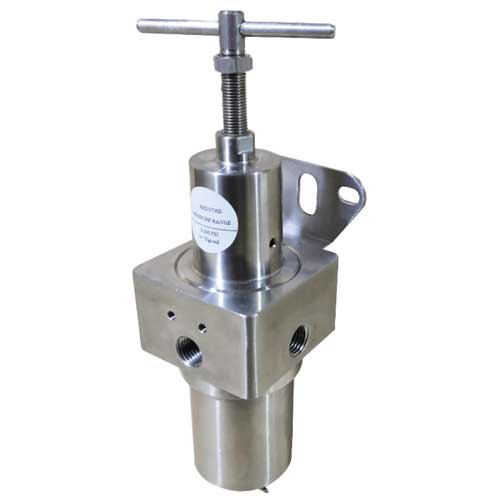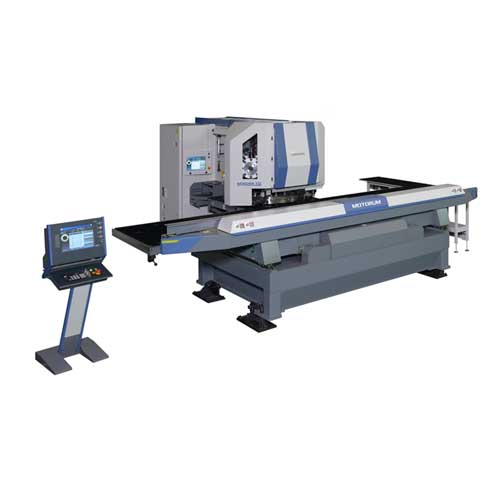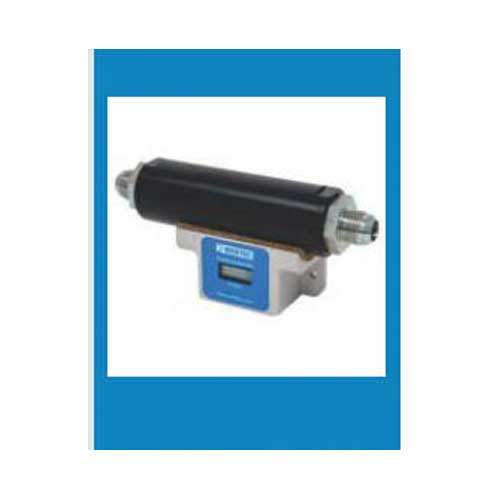Schedule a Call Back
SEZs are Here to Stay
 Technical Articles
Technical Articles- Sep 02,11
From the data available for the year 2010-11, it is clear that SEZs are performing well beyond expectations even if there are certain obstacles that still need to be overcome, reports Huned Contractor
Special Economic Zones (SEZs) have certainly been a hit in India. This is more than evident from the various performance data available on SEZs that highlight a growth curve of over five years. Even if the component of Minimum Alternate Tax (MAT) may be worrying the SEZs in the country, the zones have clocked an impressive export record in 2010-11. Interestingly, Gujarat tops among the SEZ States by contributing 46 per cent to the total exports from India.
According to the information made available by the Ministry of Commerce and Industry on its web portal www.sezindia.nic.in, SEZs in India recorded a growth of 43.11 per cent in exports in 2010-11 over 2009-10. Of the total SEZ exports of Rs 3,15,867.85 crore in 2010-11, Gujarat registered the highest exports of Rs 1,46,877.74 crore.
The contribution from Gujarat has been from 13 SEZs. The State achieved the lead position in SEZ exports mainly due to Reliance Industries Ltd (RIL) SEZ in Jamnagar which exported products and goods worth Rs 1,03,325 crore, almost 70 per cent of the total exports from the State.
On the other hand, the multi-product SEZ in Surat contributed exports worth Rs 38,156 crore. Apart from these two SEZs, which contributed around 96 per cent of the total exports from Gujarat, the other 11 SEZs contributed the remaining 4 per cent of exports worth Rs 5,396.70 crore. As on December 31, 2010, an investment of Rs 1,95,348 crore has been made in SEZs and the total direct employment in SEZs is 6,44,073 persons.
India was one of the first in Asia to recognise the effectiveness of the Export Processing Zone (EPZ) model in promoting exports, with Asia's first EPZ set up in Kandla in 1965. With a view to overcome the shortcomings experienced on account of the multiplicity of controls and clearances, absence of world-class infrastructure, and an unstable fiscal regime and with the drive to attract larger foreign investments in India, the Special Economic Zones (SEZs) Policy was announced in April 2000.
This policy is intended to make SEZs an engine for economic growth supported by quality infrastructure complemented by an attractive fiscal package, both at the centre and the State level, with the minimum possible regulations. SEZs in India functioned from November 1, 2000 to February 9, 2006 under the provisions of the Foreign Trade Policy and fiscal incentives were made effective through the provisions of relevant statutes.
To instill confidence in investors and signal the government's commitment to a stable SEZ policy regime and with a view to impart stability to the SEZ regime thereby generating greater economic activity and employment through the establishment of SEZs, a comprehensive draft SEZ Bill was prepared after extensive discussions with the stakeholders. A number of meetings was held in various parts of the country both by the minister for commerce and industry as well as senior officials for this purpose.
The Special Economic Zones Act, 2005 was passed by Parliament in May 2005 which received presidential assent on June 23, 2005. After extensive consultations, the SEZ Act, 2005, supported by SEZ rules, came into effect on February 10, 2006, providing for drastic simplification of procedures and for single window clearance on matters relating to central as well as state governments.
The main objectives of the SEZ
Act are:
• Generation of additional economic activity,
• Promotion of exports of goods and services,
• Promotion of investment from domestic and foreign sources,
• Creation of employment opportunities, and
• Development of infrastructure facilities.
A single window SEZ approval mechanism has been provided through a 19-member inter-ministerial SEZ Board of Approval (BoA). The applications duly recommended by the respective State governments/UT administration are considered by this BoA periodically. All decisions of the BoA are with consensus.
The SEZ rules provide for different minimum land requirement for different class of SEZs. Every SEZ is divided into a processing area where alone the SEZ units would come up and the non-processing area where the supporting infrastructure is to be created. There are several benefits of SEZs in India as they promote development of the area where they are set up. The local population can acquire new skills and improve their productivity and earning capacity. Industry benefits from the acquisition of the latest technical know how through foreign partnerships.
Industries or units within the SEZ get access to power, water supply and good roads, along with easy access to air cargo and railway freight facilities for movement of goods. They get approvals, custom clearances within a short time and speedy redressal of disputes. Units can develop security, recreational and dining facilities for employees on a commercial basis within the SEZ.
Industrial units located in SEZ in India can have 100 per cent foreign ownership and can repatriate profits and income abroad. This improves productivity, increases competition and makes the units more efficient. They also get access to financial assistance from banks and financial institutions for setting up units within the SEZ. Moreover, the success of SEZs in India can become a model for growth across other sectors within the country.
However, while the SEZ concept has taken wings, there also have been some concerns expressed in recent times. In March 2011, for example, the president and CEO of a major SEZ investor in India highlighted the removal of some development-related incentives for SEZs in the 2011-12 Union Budget presented by Finance Minister Mr Pranab Mukherjee. "The mid-way removal of the incentives could lead to re-evaluation of the projects," said Ms Chong Siak Ching of Ascendas Pte Ltd, which has set up SEZs in Indian cities like Bangalore and Chennai. The remark was made after she addressed the US-Asia Pacific Regional Business Summit in Singapore. The incentives in question also include utility taxes, she added, pointing out that this could also affect IT companies that are tenants in the SEZs. "India should also be cautious about losing its competitive edge in attracting investors as more regional countries were becoming an attractive place for investment for foreign investors," she added.
There is also a feeling that India has not been able to derive the maximum benefit from SEZs the way China has. While India had a first-mover advantage and China took the initiative of setting up SEZs only 15 years later, i.e., in 1980 by establishing its first SEZ at Shenzhen, it is China today that is considered the world's factory. Shenzhen's 30 years have turned out to be a testament to the idea of clusters - a large area concentrating on similar manufacturing activities and benefiting from relaxed rules can create great scale and efficiency. Though it has hundreds of other investment zones, China has only five SEZs. But they are large: Shenzhen covers 2,000 sq.km. India boasts of 577 approved SEZs, with 114 of them operational but around 90 per cent of them cover less than 3 sq.km each. Many of the SEZs in India have also run into rough weather due to land acquisition problems. However, to look at the brighter side, the SEZ scheme has also begun to attract novel propositions. One such case is that of an initiative taken by the farmers of Avasari Khurd village in the Ambegaon taluka near Pune. The 1,500-odd farmers of the village have formed a company -- Avasari Khurd Industrial Development Pvt Ltd. "The SEZ has been proposed on barren land worth Rs 900 crore," says industrialist Sopan Bhor, who mobilised the farmers to explore the possibility of establishing the SEZ.
"Instead of sitting on this asset, we decided to convert it into a capital venture. About 18,000 people stay in the village and not only will everyone get a job, the farmers will also be owners of the SEZ," he adds. The proposed company plans to use 2,665 acres of the total 6,200-odd acres in the village for agriculture and 2,489 acres for industrial development.
The one good thing about SEZs is that it is backed by proactive support from the government. For instance, amidst protests against land acquisition, the government recently said that it might re-look at the land ceiling of 5,000 hectares for the SEZs.
"Land issues are critical. I think the minimum size is something that needs to be looked at again definitely. You are not going to find 5,000 hectares of land area. It is a pipe dream," said Commerce Secretary Mr Rahul Khullar at an ASSOCHAM conference on SEZs in New Delhi held in July. The Commerce Ministry is likely to put up for review the issue before a Group of Ministers (GoM) headed by Pranab Mukherjee soon. It was the GoM, which had earlier lowered the land ceiling for SEZs from 10,000 hectares to 5,000 hectares in the face of protests, including against Nandigram. Khullar also said the developers should also start looking at other States besides Kerala, Tamil Nadu, Maharashtra, Karnataka, Gujarat and Andhra Pradesh to set up tax-free enclaves.
| SEZs Exports in 2010-11 | (Rs Crore) |
| Central Government SEZs State Government/ | 53,466.93 |
| PrivateSEZs Established Prior to SEZ Act, 2005 | 66,186.36 |
| SEZs Notified Under SEZ Act, 2005 | 1,96,214.66 |
| Total | 3,15,867.95 |
Related Products

Precision Series Filter Regulator
Siemag Industries offers a wide range of precision series filter regulator

Ac Servo Motorum 3048tg With 8-station Tapping
Meiban Engineering Technologies Pvt Ltd offers a wide range of AC servo motorum 3048TG with 8-station tapping.

Flow Hour Counters
HTM Hydraulics Pvt Ltd offers a wide range of flow hour counters.














